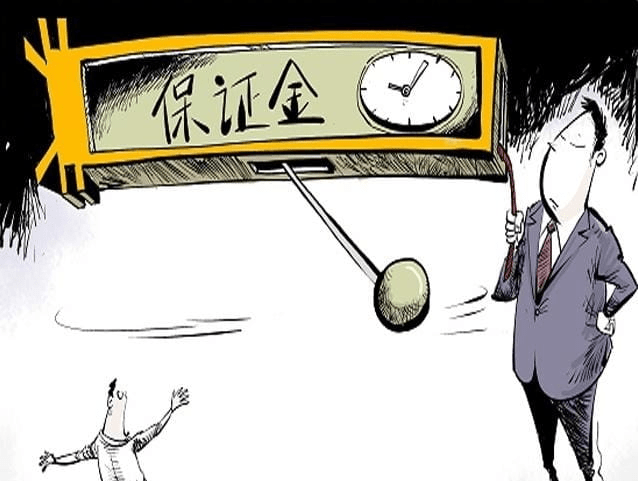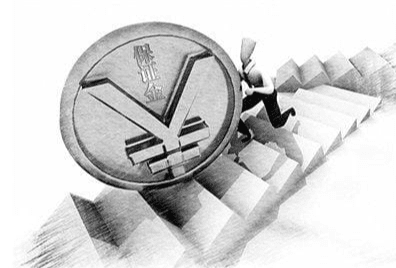Since friends read articles about contracts, they can't wait to know how to play contracts. I said, brother, don't be in a hurry to get yourself in trouble; sharpening the knife does not delay the work of cutting wood. Let's take some time to sharpen our knives and build a foundation first.
For those who haven't seen it yet, here: understand contracts in an instant, get reacquainted with contracts here.
Today, let's first understand a few key concepts: index price, margin, maintenance margin rate, and margin models.

1. Index Price
USDT contracts and digital contracts use spot indices from multiple exchanges as their index price, which serves as an indicator for traders to assess floating profit and loss. It is impossible to manipulate the spot prices of multiple exchanges simultaneously, effectively preventing artificial manipulation and better reflecting the overall market price level. Malicious acts like 'pinning' or 'unplugging' are non-existent.

2. Margin
When you buy and sell contracts on the exchange, you only need to pay a certain percentage of the contract value as a financial guarantee for fulfilling the contract, allowing for trading multiples of the margin. The funds here refer to the contract margin.
For example, if BTC is now $7,500, and you predict that the price of BTC will rise in the future, meaning you are bullish on BTC, how much margin do you need to open 1,000 contracts of BTC (assuming 1 contract = 0.02 BTC, 1,000 contracts = 20 BTC) on a certain exchange?
Not much, just 1%, that's only 0.2 BTC.
In other words, you have leveraged 100% of the position value with 1% of the funds.
If BTC rises by 10%, then you make 2 BTC.
Of course, if the direction is wrong, you will also have to bear the drop in position value of 100%.
When choosing different leverage multiples for trading, different initial margins need to be paid.
Typically, exchanges offer leverage of 1x, 5x, 10x, 20x, and 100x, with corresponding initial margin requirements of 100%, 20%, 10%, 5%, and 1%. Traders can set their own preferences based on their risk appetite.

3. Maintenance Margin Rate
In contract trading, to ensure your position remains, the margin in your account must not be less than 0.5% of the position value. This 0.5% is the maintenance margin rate. For example, if an exchange's maintenance margin rate is 0.5%, and when the BTC price is $20,000, if you choose 100x leverage to go long, your liquidation line is $19,900, not $19,800.
The maintenance margin rate determines the liquidation line of the contract.
Therefore, in the case of high leverage, traders should pay attention to timely margin calls or closing positions.
Currently, the minimum maintenance margin rate for mainstream perpetual contract exchanges is 0.5%, which in a cross-margin model means:
The liquidation line for 100x leverage is approximately -50%
The liquidation line for 50x leverage is approximately -75%
The liquidation line for 20x leverage is approximately -90%
The liquidation line for 10x leverage is approximately -95%
High leverage not only amplifies profits but also increases risks, so investors should choose leverage carefully.

4. Margin Models
Digital contracts and USDT contracts both use a full margin model, but they are not entirely the same.
Digital contracts use a full margin model for single varieties, with different accounts for different currencies, and the position value is calculated in the corresponding currency. All assets in the same currency account serve as margin, and digital contracts use a forced liquidation price for risk control.
The liquidation price is determined by the maintenance margin rate and position value. If the index price reaches the liquidation price, the account for that currency will enter the liquidation process. You can use the liquidation price as a guide for adjusting your position.
USDT contracts use a full variety full position margin model, with a single risk level calculation for all varieties and positions.
The system automatically calculates the risk level based on the maintenance margin rate and position situation and displays it in real time.
When the risk level > 50%, the risk level display bar will change from green to red. When the risk level > 90%, you will receive a warning message. When the risk level = 100%, meaning the assets in the account are insufficient to meet the maintenance margin, your account will enter the liquidation process.
With the risk level indicator, it is more convenient to assess position risk.
Delivery contracts use a cross-margin model, where different varieties' positions are calculated separately and do not affect each other.
The system automatically calculates the estimated liquidation price based on the maintenance margin rate and position situation and displays it in real time.
Delivery contracts use the estimated liquidation price method for risk control, whether there is risk is clear at a glance.
Now everyone knows the index price, margin, maintenance margin rate, and several margin models, gaining a basic understanding of contract concepts. Later, Brother Liang will explain related terms and their internal logic in the contract account. Like + Follow, stay tuned!

